Rio de Janeiro’s contaminated waters
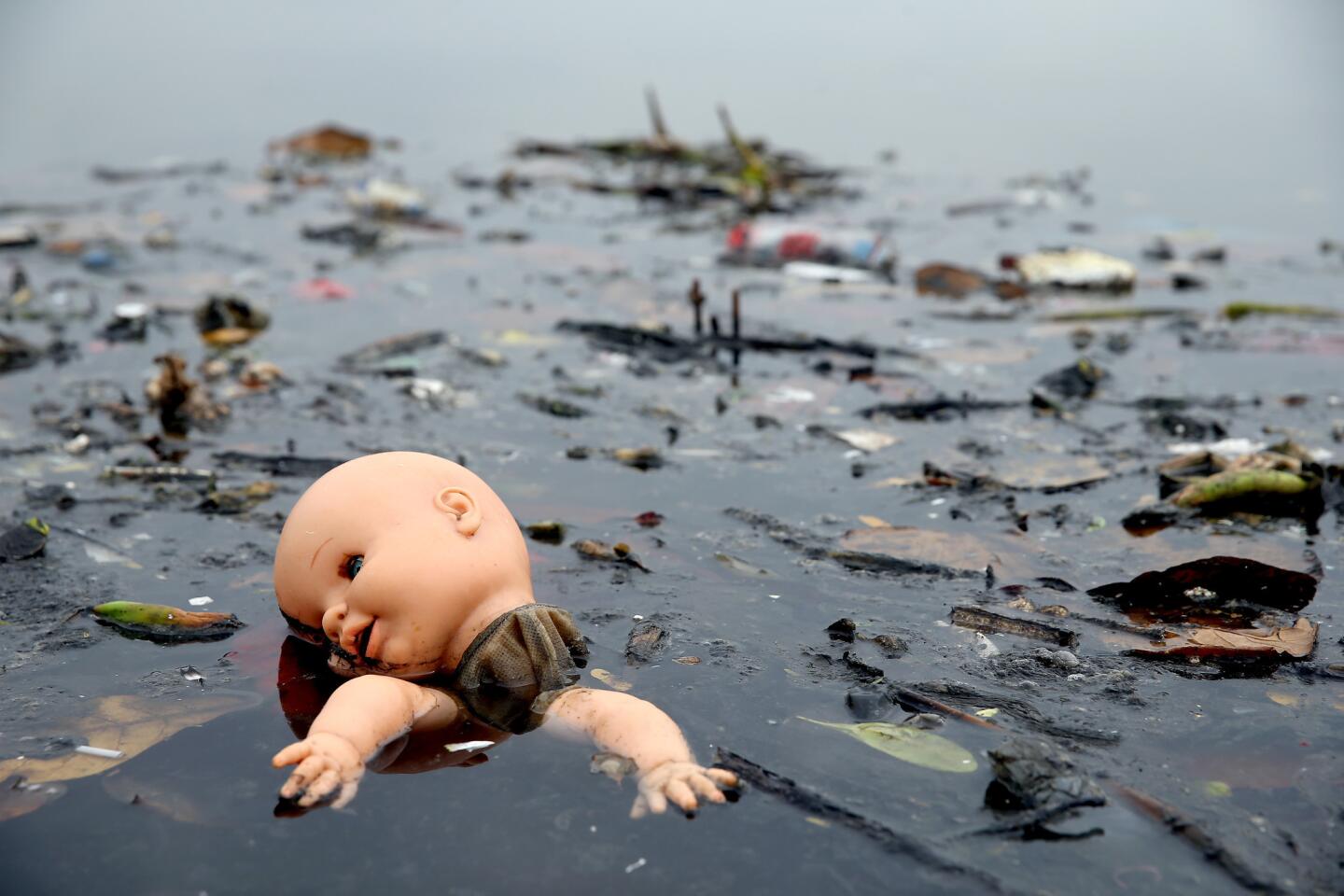
Garbage floats Wednesday in Guanabara Bay, site of sailing events for the Rio 2016 Olympic Games.
(Matthew Stockman / AFP/Getty Images)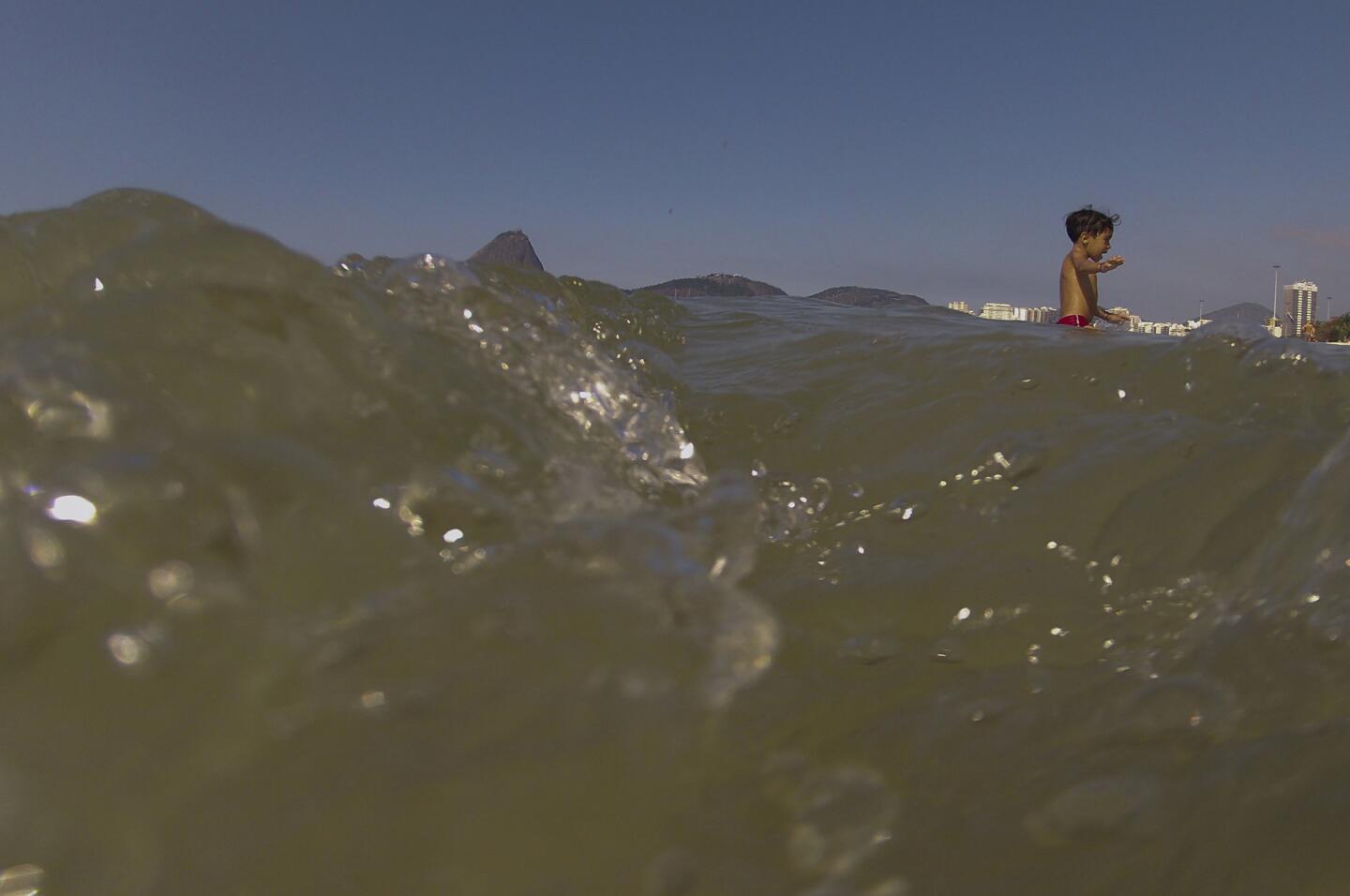
A boy wades in the beach waters of Flamengo, in Rio de Janeiro, Brazil. The Rio Olympic organizing committee’s website states that a key legacy of the games will be ‘the rehabilitation and protection of the area’s environment, particularly its bays and canals” in areas where water sports will take place.
(Leo Correa / AP)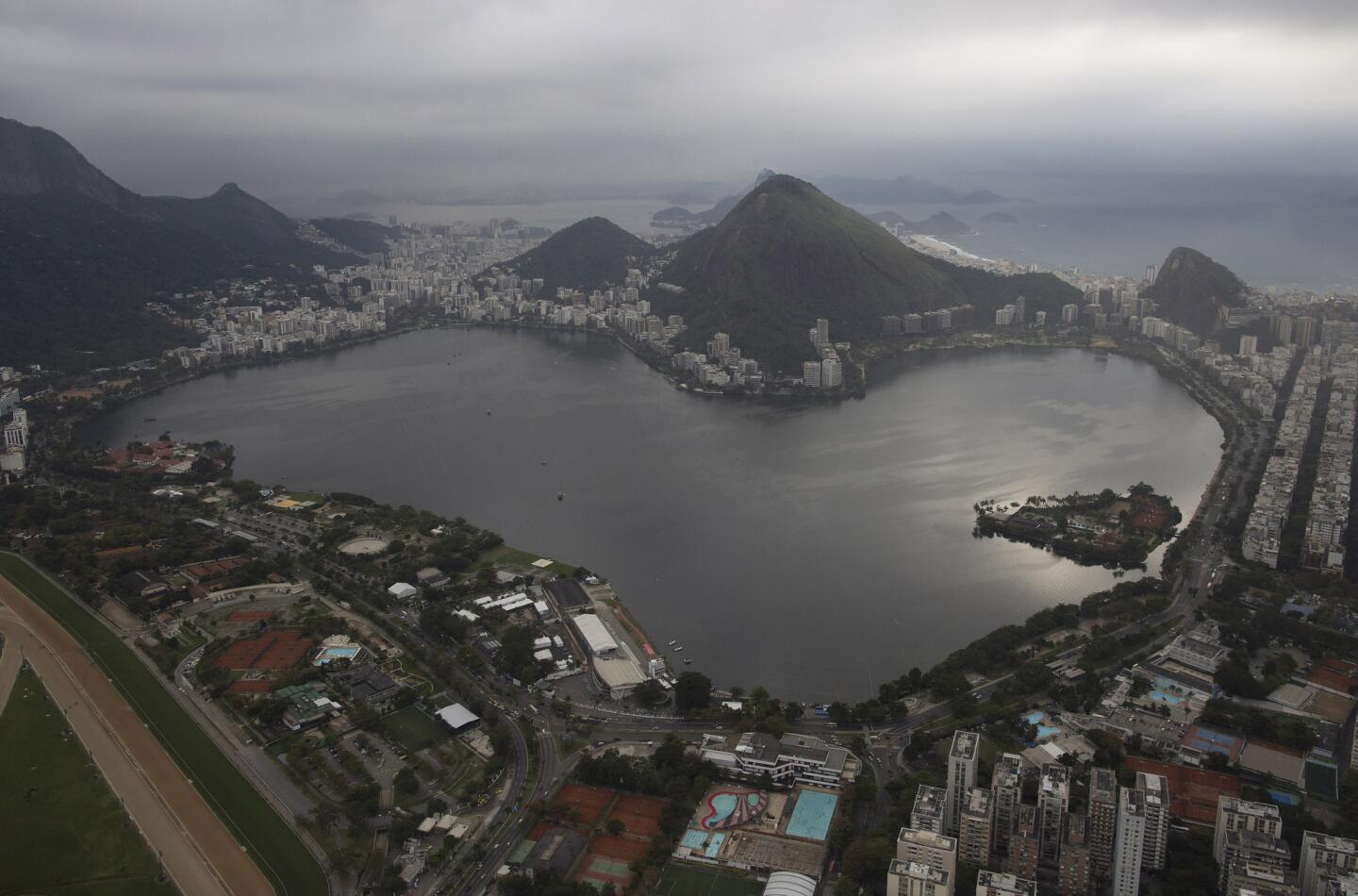
Aerial photo of the Rodrigo de Freitas Lake in Rio de Janeiro, Brazil. An Associated Press analysis of water quality found dangerously high levels of viruses and bacteria from human sewage in Olympic and Paralympic venues. The Rodrigo de Freitas Lake, which was largely cleaned up in recent years, was thought be safe for rowers and canoers. Yet AP tests found its waters to be among the most polluted for Olympic sites.
(Leo Correa / AP)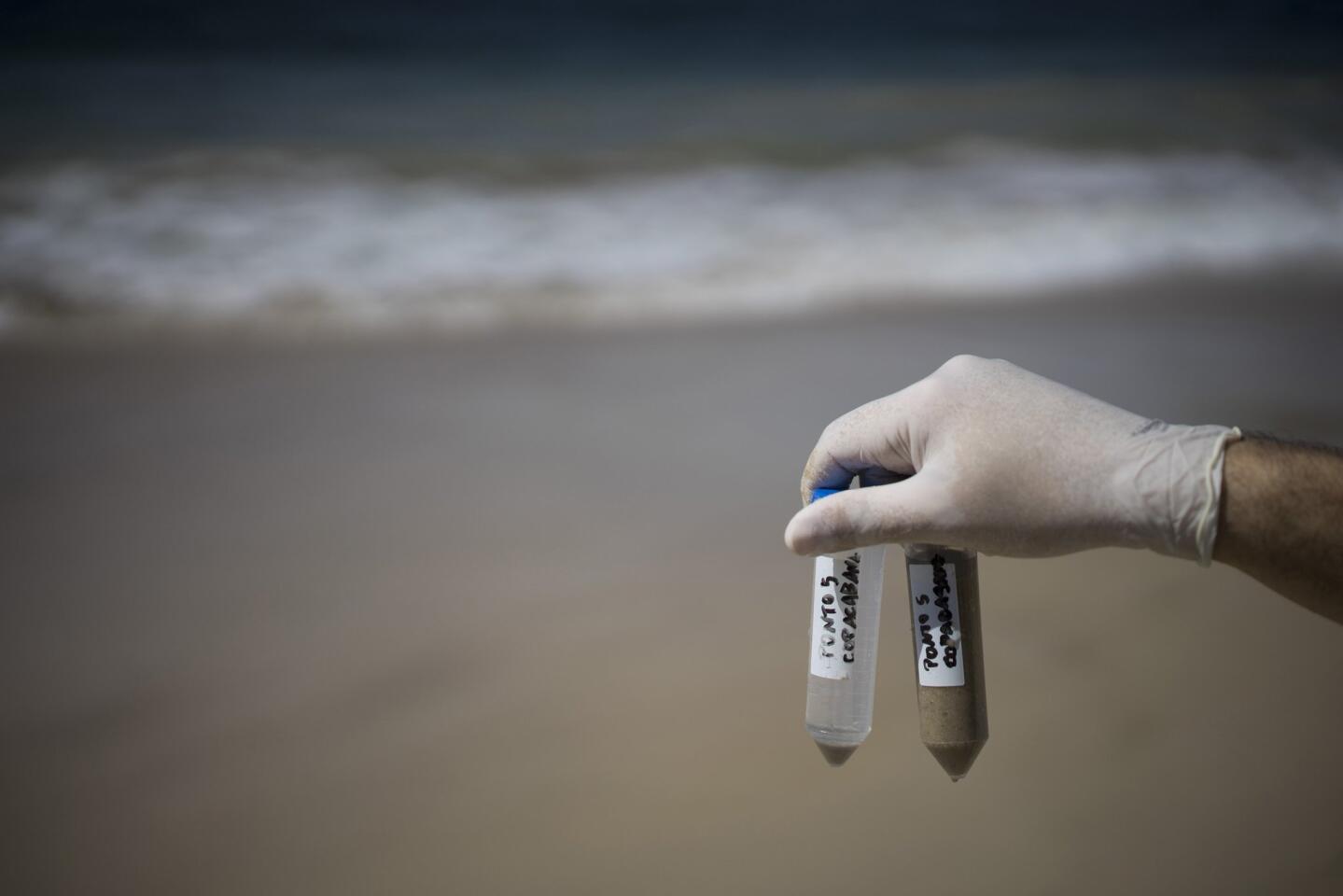
Fernando Spilki, the head of the environmental studies program at Feevale University, holds up water samples taken from the Copacabana Beach in Rio de Janeiro, Brazil. Spilki’s testing looked for three different types of human adenovirus that are typical “markers” of human sewage in Brazil.
(Felipe Dana / AP)Advertisement
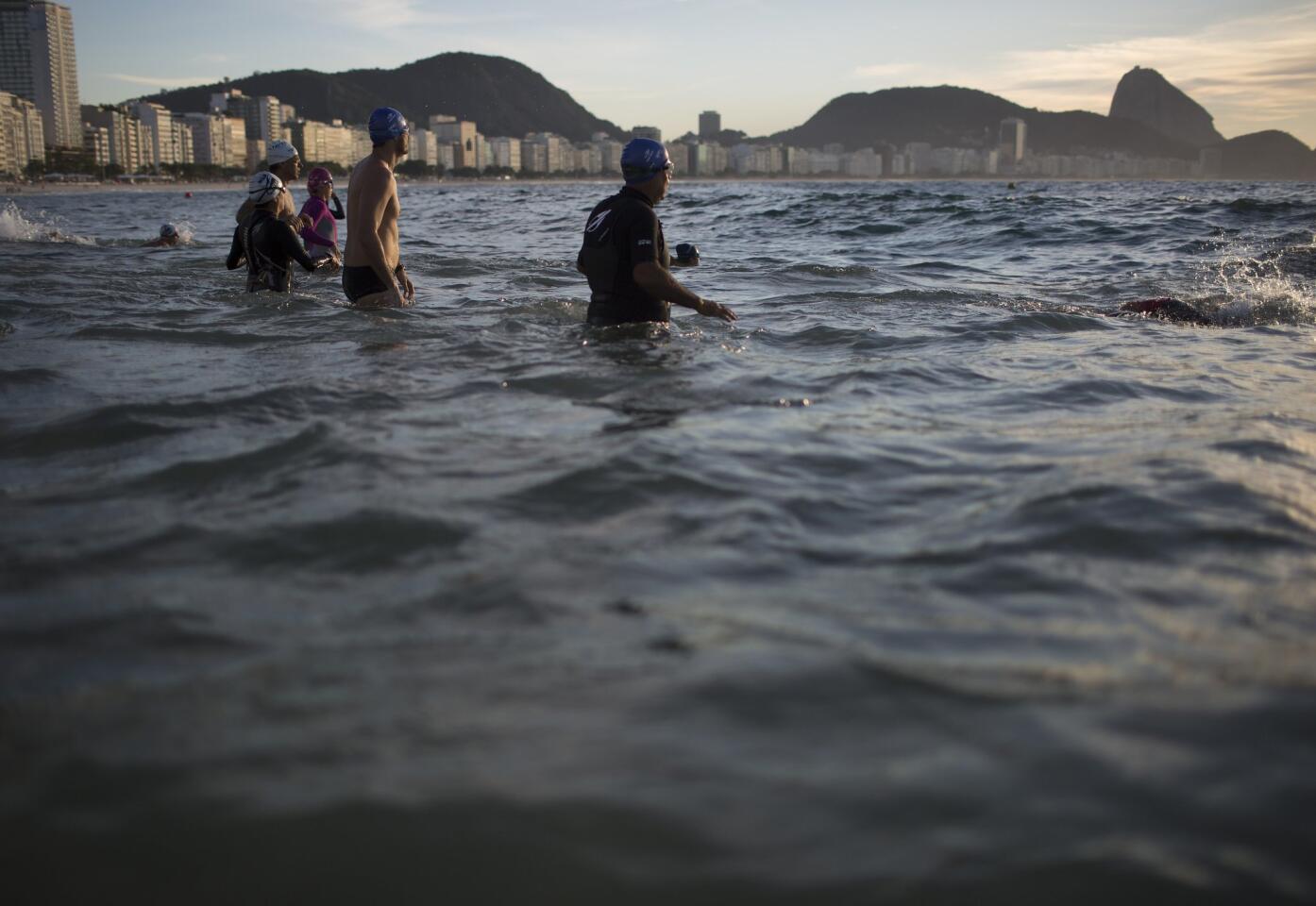
Beachgoers wade into the waters of Copacabana Beach in Rio de Janeiro, Brazil. Hundreds of olympic athletes will be sailing in the waters near Marina da Gloria in Guanabara Bay; swimming off Copacabana Beach; and canoeing and rowing on the brackish waters of the Rodrigo de Freitas Lake.
(Leo Correa / AP)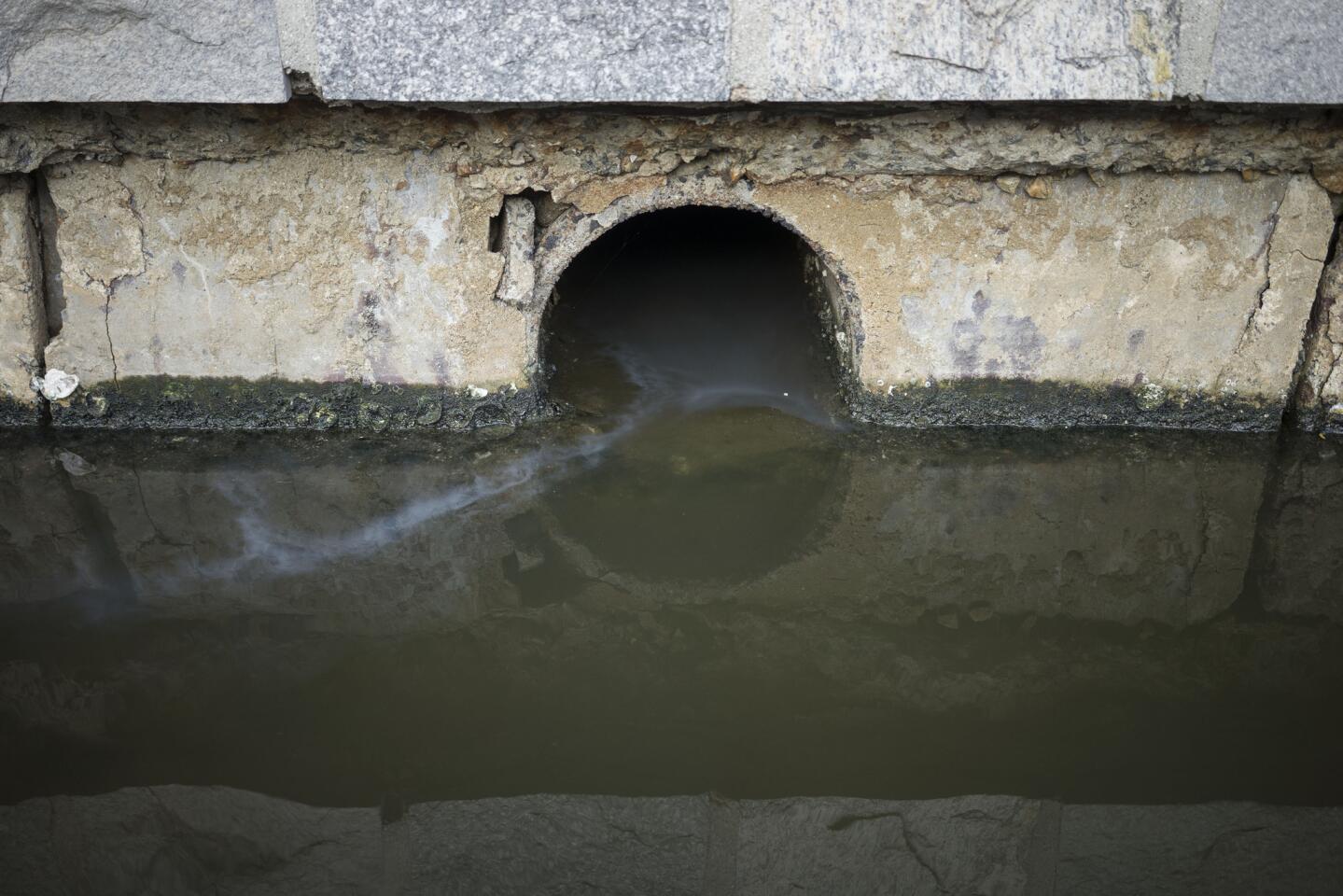
Fetid water flows out of a storm drain that dumps into the Rodrigo de Freitas Lake, where Olympic rowing competitions are slated to be held during the 2016 games, in Rio de Janeiro.
(Felipe Dana / AP)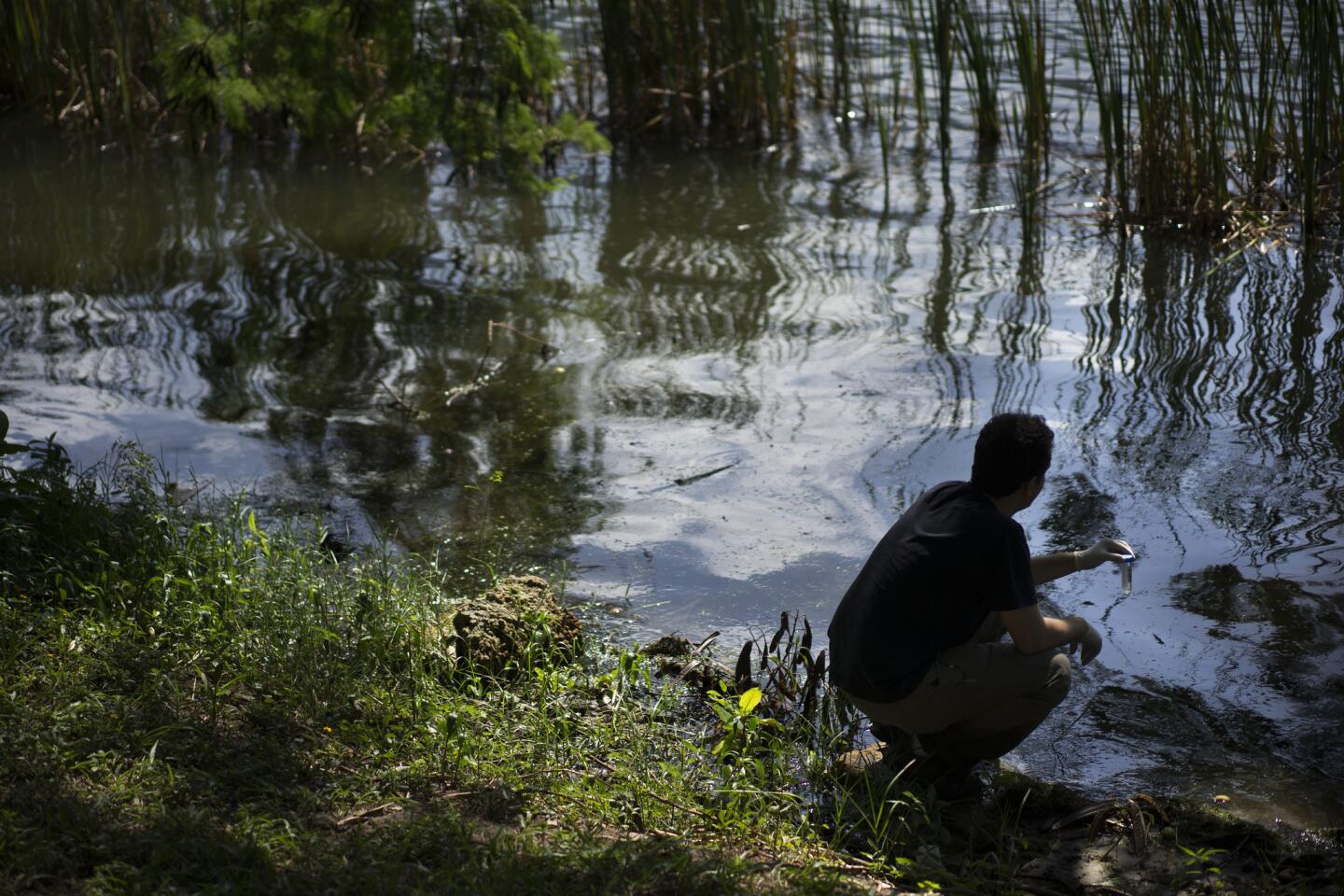
Fernando Spilki, the head of the environmental studies program at Feevale University, takes water samples from the Rodrigo de Freitas Lake, in Rio de Janeiro, Brazil. With little to no sewage treatment, Spilki said, “the quantity of fecal matter entering the waterbodies in Brazil is extremely high. Unfortunately, we have levels comparable to some African nations, to India.”
(Felipe Dana / AP)


